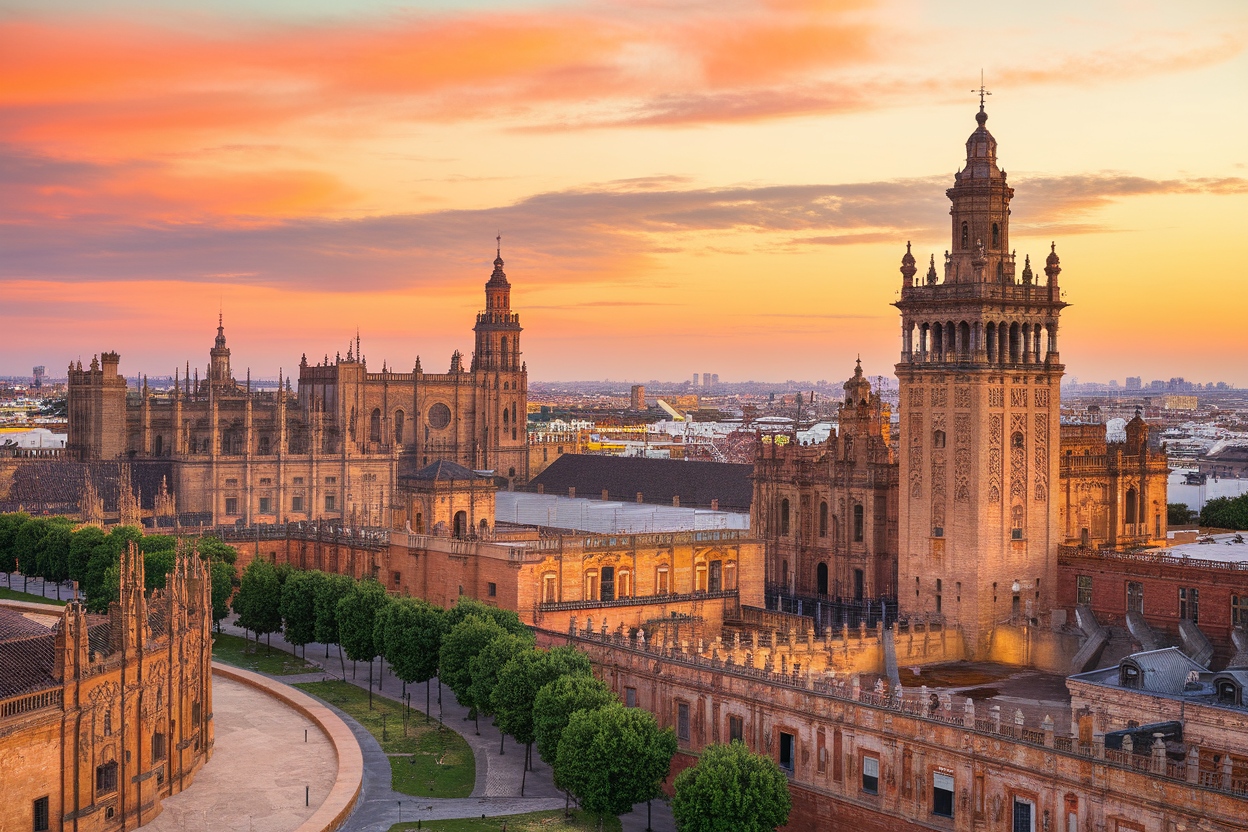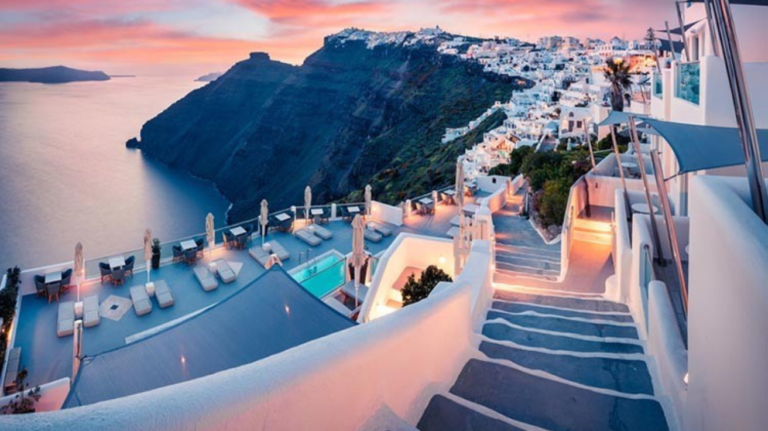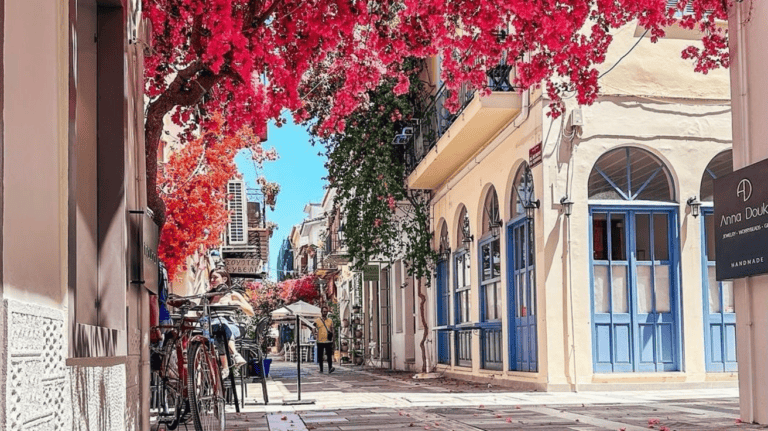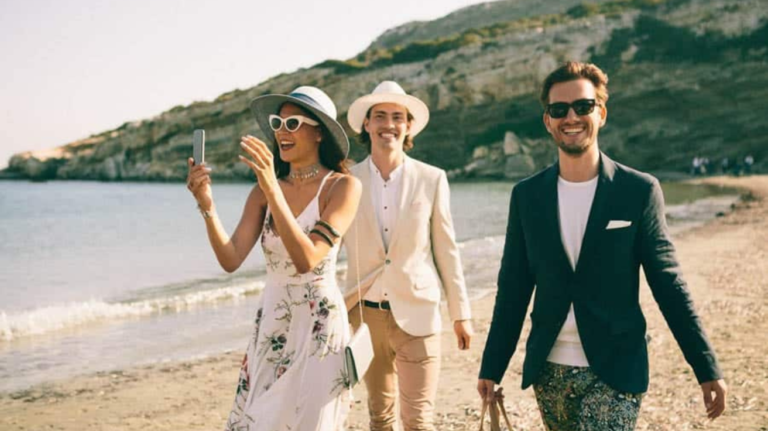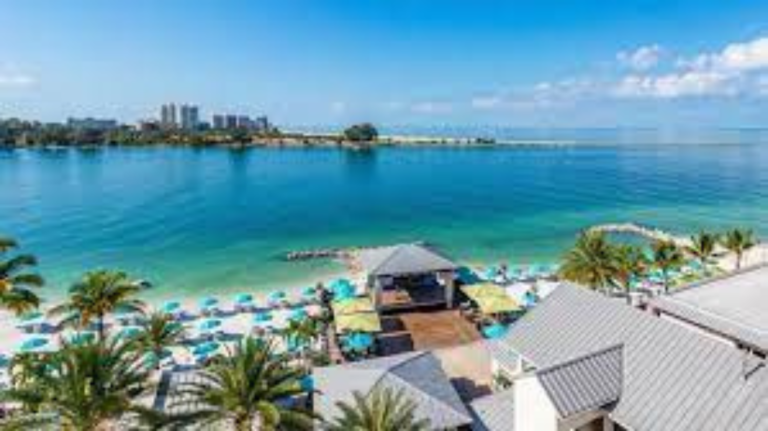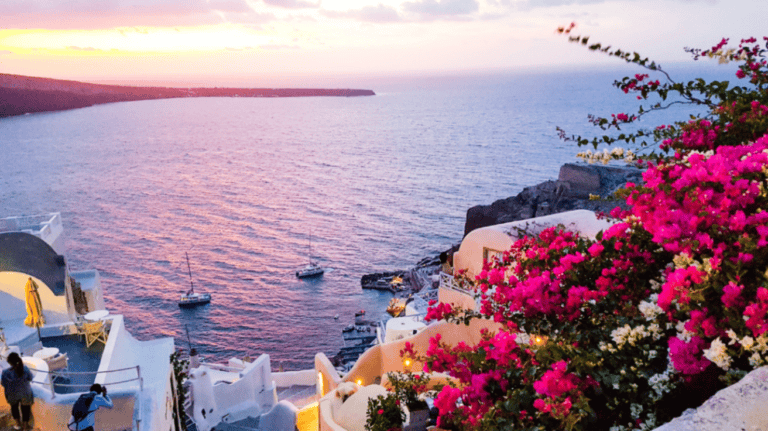14 Best Things to Do in Seville, Spain
Seville is a city where history, culture, and architecture beautifully intersect. From its grand palaces and centuries-old cathedrals to its charming neighborhoods and modern innovations, Seville offers something for every traveler.
Whether you’re captivated by the intricate details of the Real Alcázar or the sweeping views from Metropol Parasol, this vibrant Andalusian city promises unforgettable experiences.
In this guide, we’ll explore 14 must-see spots in Seville, offering a perfect mix of historic landmarks and hidden gems, all while providing tips for the best photos and ways to truly soak in the city’s atmosphere.
The Real Alcazar
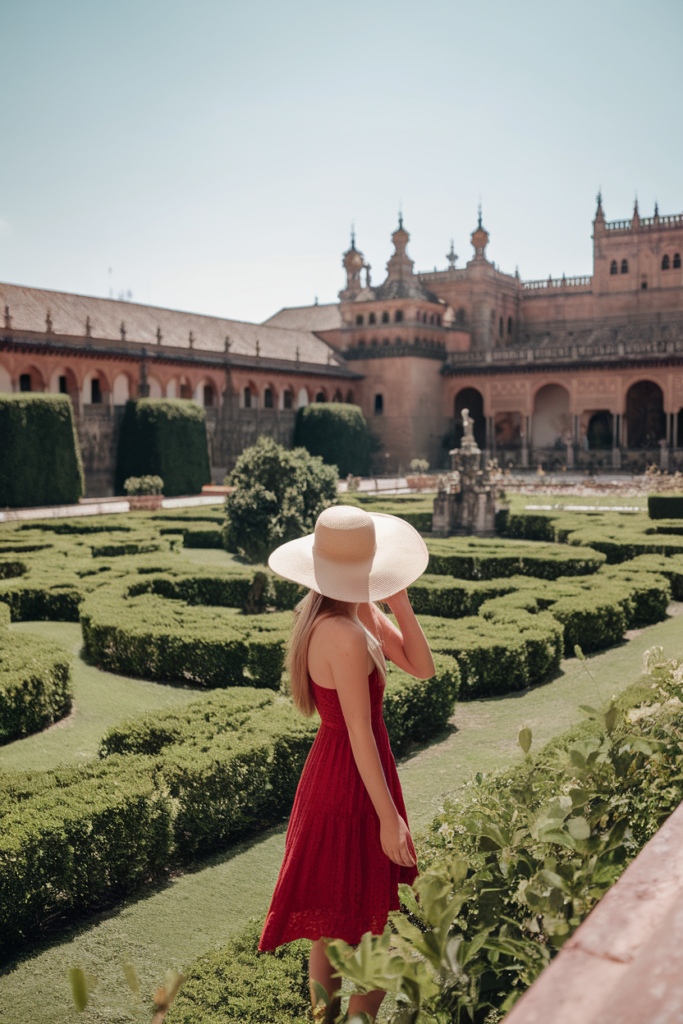
The Real Alcázar of Seville, a UNESCO World Heritage Site, is a testament to the city’s rich history and architectural splendor. Built originally as a Moorish fort in the 10th century, the palace was later transformed by Christian kings, resulting in a breathtaking blend of Islamic and Renaissance styles.
Its opulent halls and serene courtyards, like the iconic Patio de las Doncellas, are adorned with intricate tilework and detailed carvings that reflect centuries of artistic achievement.
The sprawling gardens are equally captivating, with their symmetrical layouts, bubbling fountains, and fragrant orange trees. Here, peacocks roam freely, adding a touch of whimsy to the tranquil setting.
For photography enthusiasts, arriving early is key to avoiding crowds and capturing the soft morning light, which highlights the palace’s intricate details. In the gardens, use the reflective pools to frame symmetrical shots that emphasize the grandeur of the architecture and lush greenery.
Whether exploring the palace’s historic rooms or wandering its enchanting gardens, the Real Alcázar offers endless opportunities for breathtaking photographs and a deeper appreciation of Seville’s cultural heritage.
Plaza de España
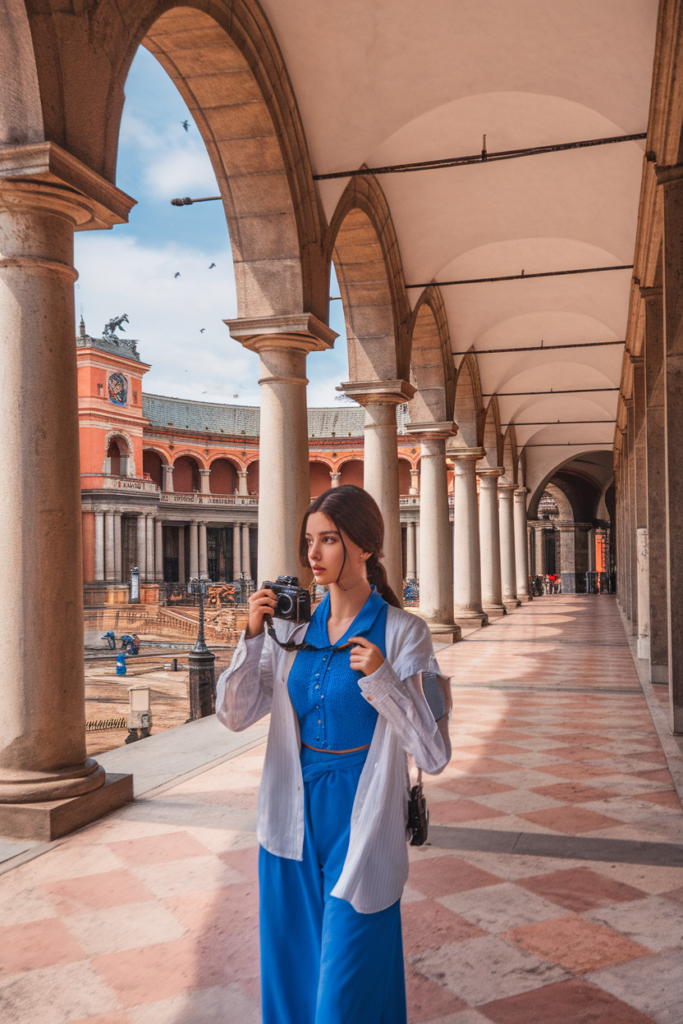
Plaza de España is one of Seville’s most iconic landmarks, designed by architect Aníbal González for the 1929 Ibero-American Exposition.
This massive semicircular plaza is a masterpiece of Renaissance Revival and Moorish-inspired architecture, featuring an impressive canal spanned by four ornate bridges symbolizing Spain’s ancient kingdoms.
The grand central building is adorned with intricate tilework, while the surrounding alcoves display vibrant ceramic murals representing each of Spain’s provinces.
Visitors can enjoy rowing boats along the canal or walking under the colonnaded galleries, which provide shade and showcase stunning craftsmanship. The plaza’s picturesque setting makes it a favorite for photographers.
To capture its beauty, visit during golden hour when the warm light enhances the intricate details of the tiles and reflects on the canal. Wide-angle shots from the bridges offer a comprehensive view of the entire plaza, while close-ups highlight the unique artistry of the ceramic murals.
Surrounded by the lush Maria Luisa Park, Plaza de España is a perfect blend of culture, history, and natural beauty, making it an essential stop for anyone exploring Seville. Whether you’re here to admire the architecture, relax by the water, or take photos, the plaza offers an unforgettable experience.
Seville Cathedral & La Giralda
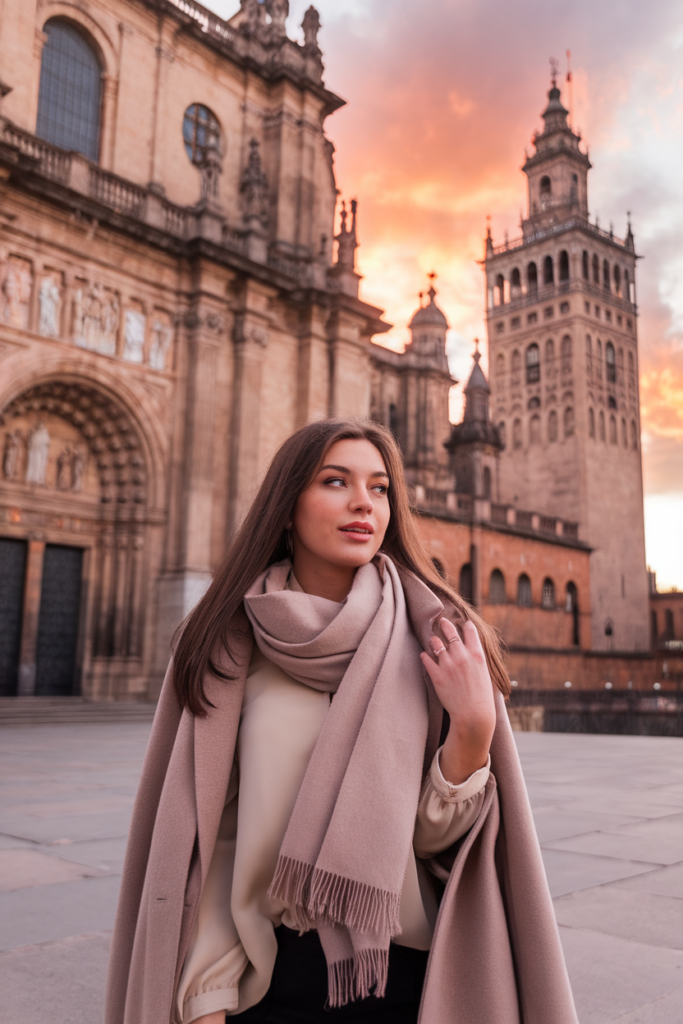
Seville Cathedral, the largest Gothic cathedral in the world, is a monumental tribute to Seville’s rich history and religious heritage. Built on the site of a former mosque, its vast interior houses breathtaking stained glass, intricate wood carvings, and the ornate Main Chapel. It’s also the final resting place of Christopher Columbus.
La Giralda, the cathedral’s iconic bell tower, was originally a minaret from the mosque. Its unique design, blending Moorish and Renaissance styles, offers a glimpse into Seville’s architectural evolution. Visitors can ascend its gentle ramps—originally designed for horseback riding—for panoramic city views.
For photography, the golden light of sunrise or sunset beautifully highlights the cathedral’s detailed façade and the surrounding square. Inside, focus on capturing the play of light through the stained glass, and from the top of La Giralda, frame shots of Seville’s rooftops and the winding Guadalquivir River.
Together, Seville Cathedral and La Giralda represent the city’s unique fusion of cultures and are must-see landmarks that offer both historical intrigue and awe-inspiring beauty.
Santa Cruz
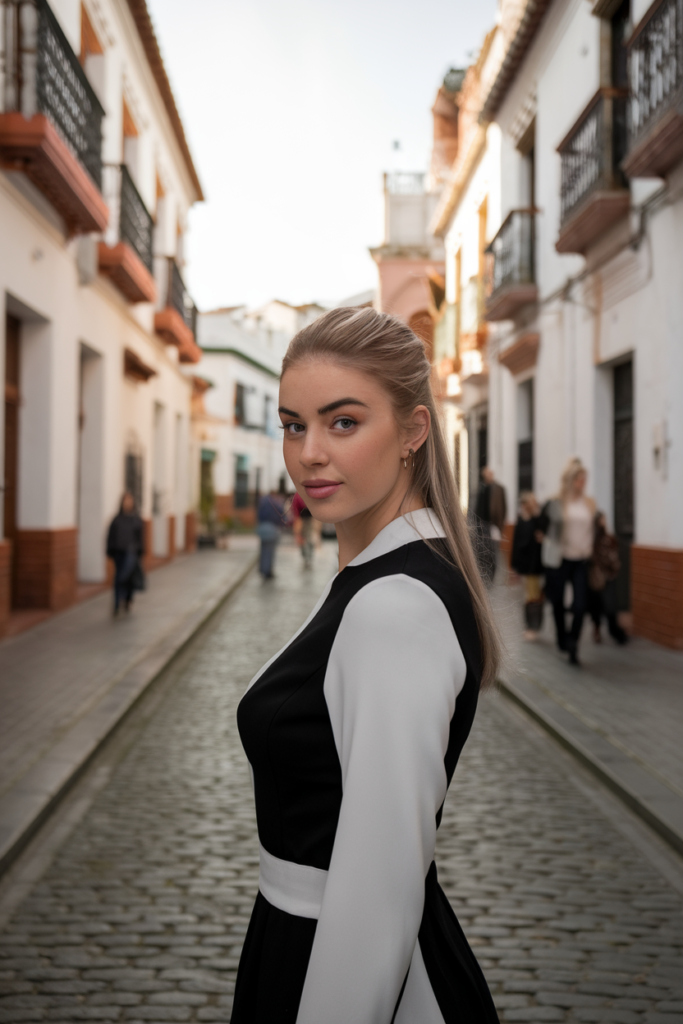
Santa Cruz, Seville’s most enchanting neighborhood, is a labyrinth of narrow cobblestone streets, whitewashed houses, and fragrant orange trees. Once the city’s Jewish quarter, its rich history is woven into its charming squares, ancient synagogues, and iconic landmarks.
Wandering through Santa Cruz feels like stepping back in time, as hidden courtyards, vibrant bougainvillea, and wrought-iron balconies create an atmosphere of timeless beauty.
This area is home to landmarks like the Murillo Gardens and the picturesque Plaza de Doña Elvira, perfect for quiet reflection or vibrant photographs. Santa Cruz’s proximity to the Real Alcázar and Seville Cathedral makes it an ideal starting point for exploring the city’s major sights.
For photographers, the early morning light adds a magical glow to the alleyways and plazas. Capture candid moments in the bustling tapas bars or the play of light and shadow on centuries-old facades. Santa Cruz invites visitors to get lost in its history, beauty, and charm.
Metropol Parasol
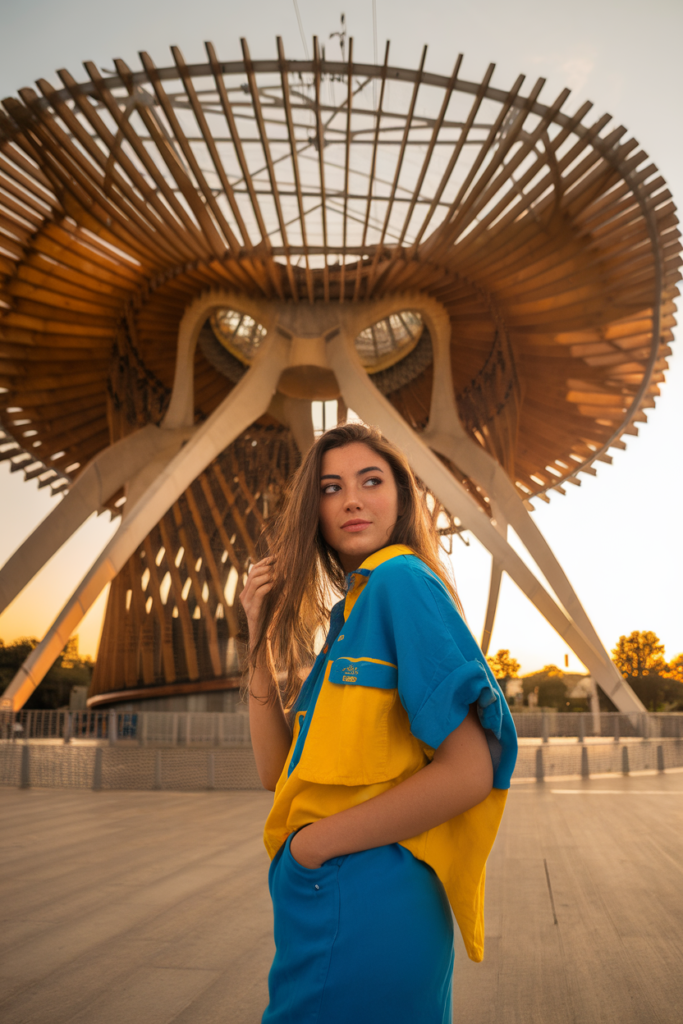
Metropol Parasol, known locally as “Las Setas” (The Mushrooms), is a striking modern structure in Seville’s old town.
Designed by Jürgen Mayer and completed in 2011, it’s the largest wooden structure in the world, with undulating canopies resembling giant mushrooms. Located in Plaza de la Encarnación, it revitalized the area, offering a blend of history and innovation.
The structure houses multiple levels, including an archaeological museum in its basement showcasing Roman and Moorish ruins. The central level features markets and restaurants, while the rooftop walkway provides panoramic views of Seville’s skyline.
Photography enthusiasts will appreciate the unique design and lighting. At sunset, the golden hues illuminate the wood, creating a surreal effect. Capture wide-angle shots to showcase the structure’s sweeping curves or zoom in for abstract compositions of its intricate patterns.
Whether for history, architecture, or breathtaking views, Metropol Parasol is an unmissable spot.
Triana District
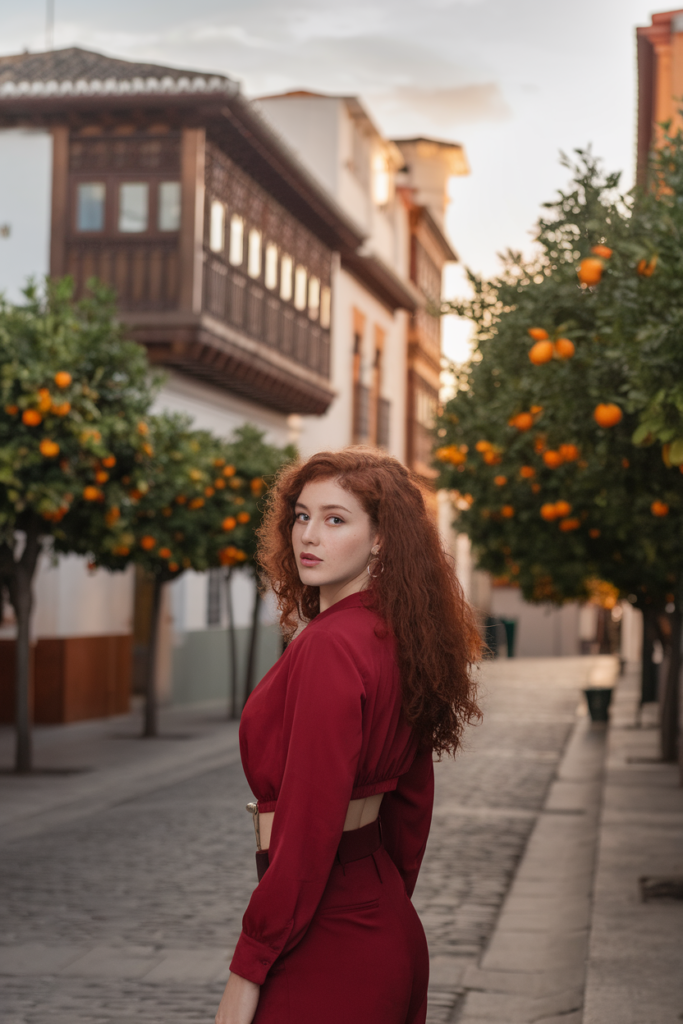
Triana, Seville’s historic district, is celebrated for its vibrant culture, artisanal crafts, and deep connection to flamenco. Located across the Guadalquivir River, this lively neighborhood has been home to potters, sailors, and gypsy communities for centuries.
Triana is known as the birthplace of flamenco, and its streets echo with the passion of this art form in intimate tablaos and local bars.
Stroll along Calle Betis for stunning views of Seville’s skyline and colorful facades, or explore the Mercado de Triana, a bustling market offering local produce, tapas, and handmade ceramics. The district’s artisanal workshops still craft traditional tiles, reflecting Triana’s pottery heritage.
For photographers, the golden hour along the river provides breathtaking reflections of the colorful houses and iconic bridges. The narrow streets, vibrant markets, and flamenco performances offer endless opportunities to capture Triana’s dynamic spirit. A visit here is essential to experience Seville’s heart and soul.
Flamenco Shows
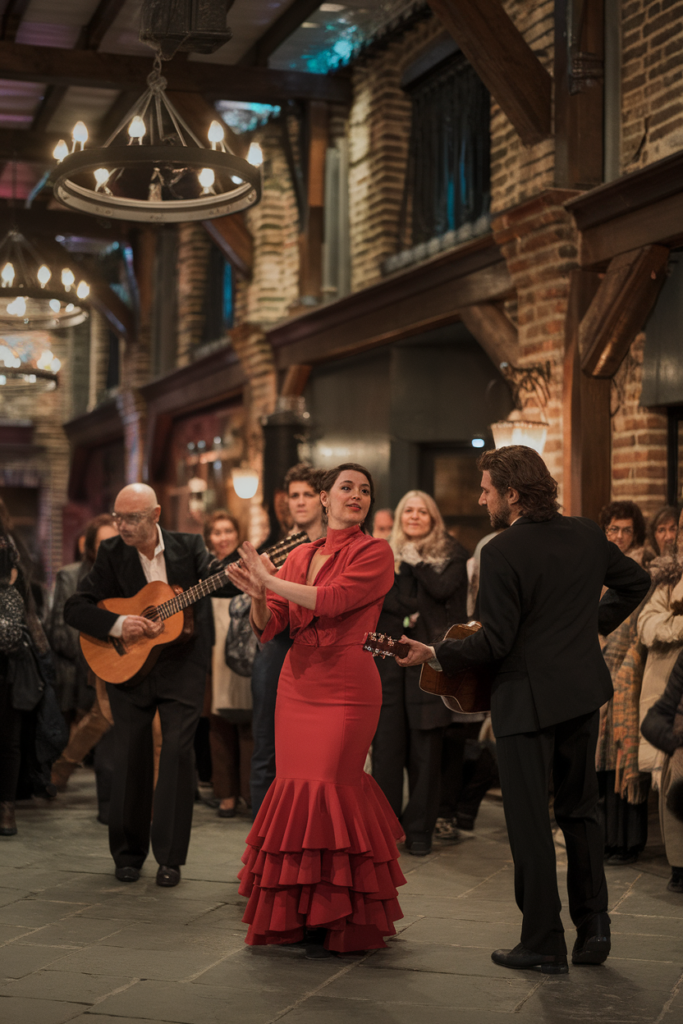
Flamenco shows in Seville are an electrifying experience that offers an authentic glimpse into Andalusian culture. As the birthplace of flamenco, Seville takes pride in its intimate tablaos, where passionate dancers, soulful singers, and skilled guitarists come together to tell powerful stories through music and movement.
Performances are set in atmospheric venues like converted taverns or historic courtyards, creating a personal connection between the artists and the audience. Each show typically features intricate footwork, dramatic hand gestures, and emotional intensity, making every performance unique.
For those interested in photography, focus on capturing the expressive faces of the performers and the energy of their movements. Seek out venues with traditional settings for an added layer of authenticity in your shots.
Flamenco shows are more than just entertainment—they’re a deep, cultural expression and an unforgettable part of any visit to Seville.
Torre del Oro
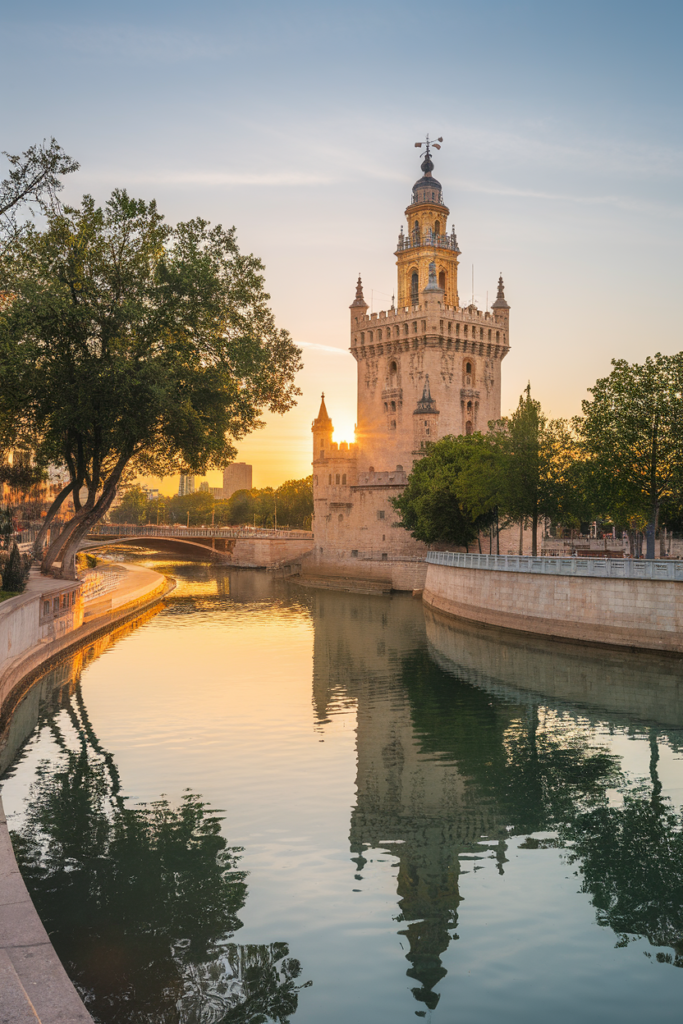
Torre del Oro, or the “Tower of Gold,” is a striking 13th-century military watchtower on the banks of the Guadalquivir River.
Originally built by the Moors as part of Seville’s defensive system, it was used to control access to the city by river and protect the nearby port. The tower’s name comes from its golden reflection on the water, once enhanced by its original lime and straw mortar coating.
Today, Torre del Oro houses a maritime museum that traces the city’s naval history, including artifacts from the Age of Exploration. Climbing to the top offers visitors stunning panoramic views of the river, Triana district, and Seville’s skyline.
For photography, capture the tower during golden hour to emphasize its namesake glow, and use the riverbank as a natural frame. A visit to Torre del Oro blends history, culture, and scenic beauty, making it a must-see landmark in Seville.
Maria Luisa Park
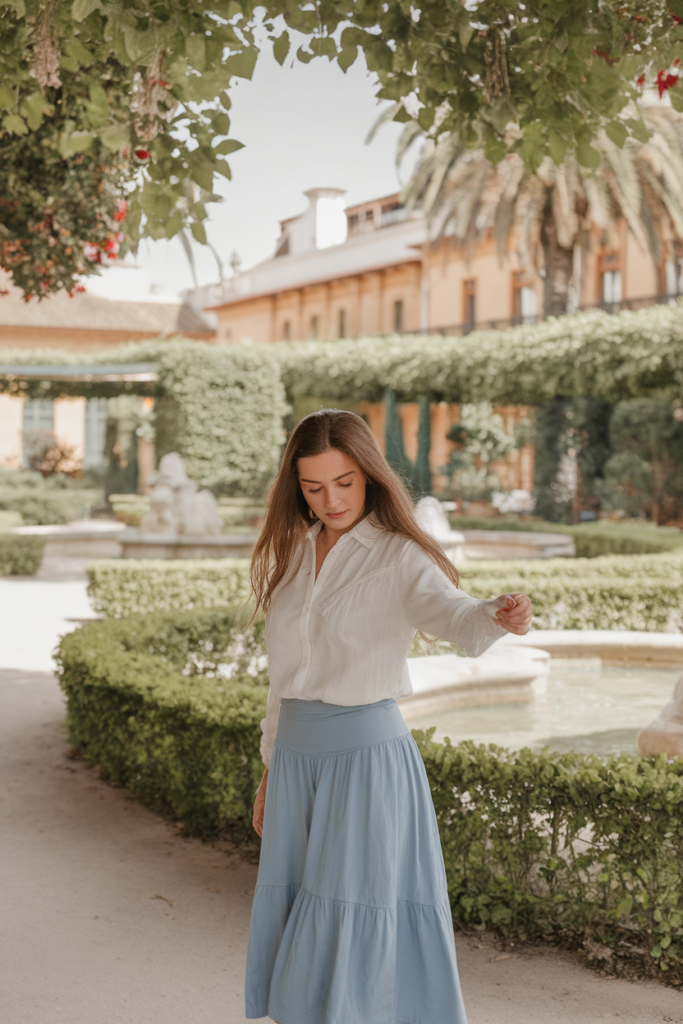
Maria Luisa Park, Seville’s lush green oasis, is a serene escape filled with elegant gardens, fountains, and shaded pathways. Originally part of the private grounds of the San Telmo Palace, the park was donated to the city in 1893 and later redesigned for the 1929 Ibero-American Exposition.
Its layout features a harmonious mix of Moorish and Renaissance influences, with tiled benches, intricate pavilions, and picturesque water features.
The park is home to iconic landmarks such as the Plaza de España and the Plaza de América, surrounded by vibrant flowerbeds and towering palms. Visitors can stroll through its tranquil paths, rent a bike, or enjoy a leisurely boat ride on its small lake.
For photographers, early mornings offer soft light perfect for capturing the park’s colorful tilework and serene landscapes. The vibrant flora and architectural details make every corner a visual delight. Maria Luisa Park is a must-visit for nature lovers and history enthusiasts alike.
Casa de Pilatos
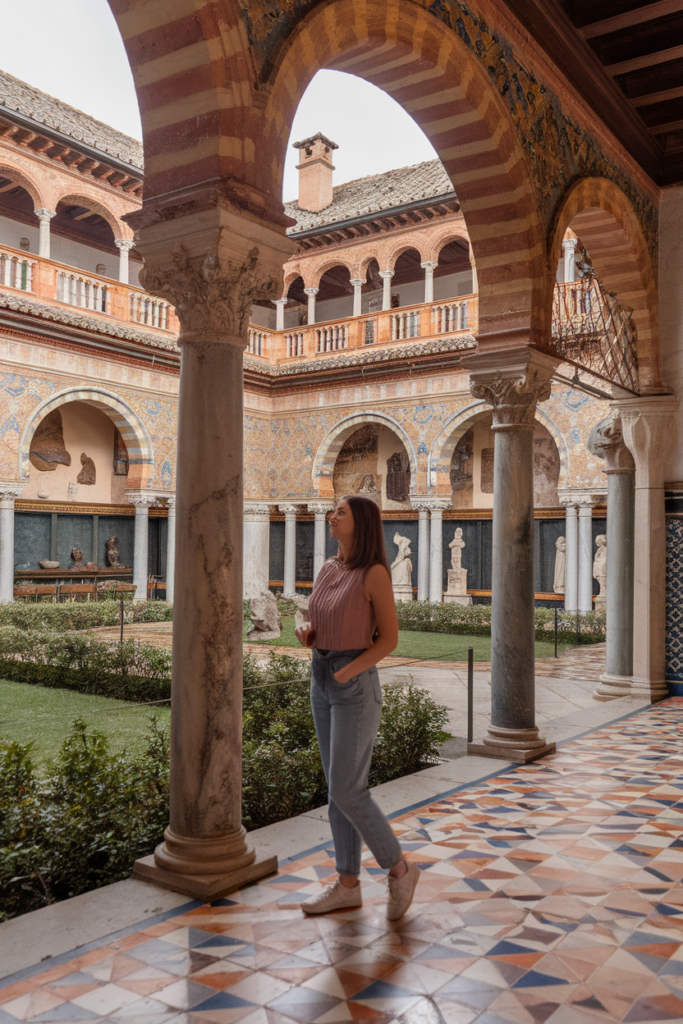
Casa de Pilatos is a stunning 16th-century palace in Seville, renowned for its harmonious blend of Mudéjar, Gothic, and Renaissance architectural styles.
Built as the residence of the Dukes of Medinaceli, it features opulent courtyards, intricate tilework, and elegant marble arches that showcase the rich cultural history of Andalusia.
The central courtyard, with its delicate columns and vibrant azulejos, is a highlight, while the lush gardens provide a peaceful retreat. Visitors can also admire the exquisite collection of sculptures, including Roman relics and Renaissance artworks.
For photographers, the interplay of light and shadow across the ornate tiles and arches creates dramatic compositions. Morning visits allow for quieter exploration, ideal for capturing the palace’s serene beauty.
Casa de Pilatos offers an unforgettable journey into Seville’s artistic and architectural heritage, making it an essential stop for history and culture enthusiasts.
Archivo de Indias
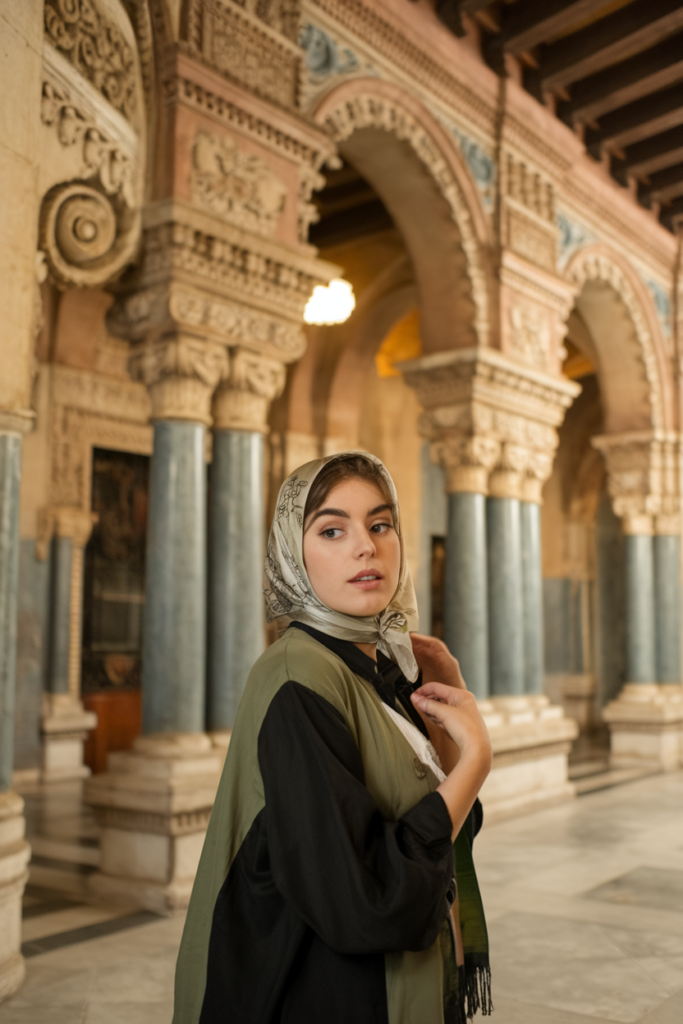
The Archivo de Indias in Seville is a UNESCO World Heritage Site and a treasure trove of historical documents. Housed in a stunning 16th-century building designed by Juan de Herrera, it originally served as a merchants’ exchange.
Today, it preserves over 43,000 volumes and 80 million pages of records detailing Spain’s exploration, colonization, and trade in the Americas and Asia.
The grand architecture features a harmonious blend of Renaissance design, with an airy courtyard and intricately carved wooden ceilings. The collection includes maps, manuscripts, and letters from figures like Christopher Columbus and Hernán Cortés, providing unique insights into global history.
Photography enthusiasts will appreciate the symmetry of the building and the light filtering through its windows. Visiting the Archivo de Indias is not just an exploration of Seville’s past but a journey into the age of discovery and empire.
Tapas Tours
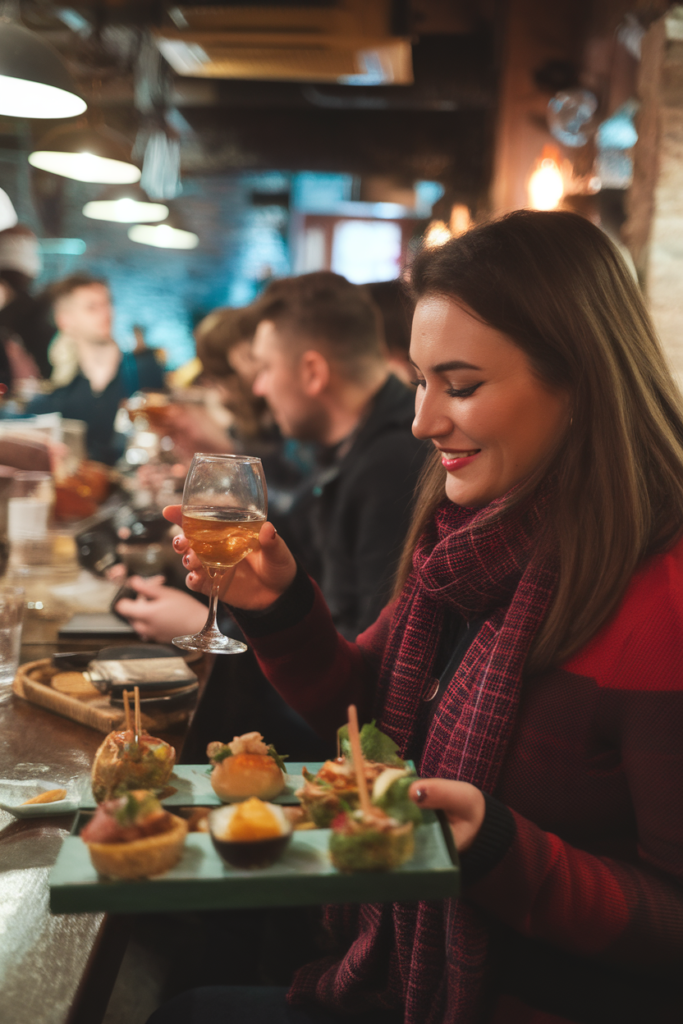
Tapas tours in Seville offer an immersive culinary adventure through the heart of Andalusian culture.
These guided experiences take you to traditional and modern tapas bars, where you can savor small, flavorful dishes paired with local wines and sherries. Each stop introduces unique tastes, from jamón ibérico and patatas bravas to innovative seafood creations.
Beyond the food, tapas tours highlight the art of dining like a Sevillano—standing at the bar, sharing plates, and enjoying lively conversation.
Knowledgeable guides provide insights into Seville’s culinary traditions, the history of tapas, and the significance of each dish. Some tours even include visits to bustling markets, where fresh ingredients are sourced.
For photographers, the colorful plates and vibrant market scenes are a feast for the eyes. Whether you’re a foodie or just curious about local flavors, a tapas tour is an unforgettable way to experience Seville’s essence.
Isla Mágica
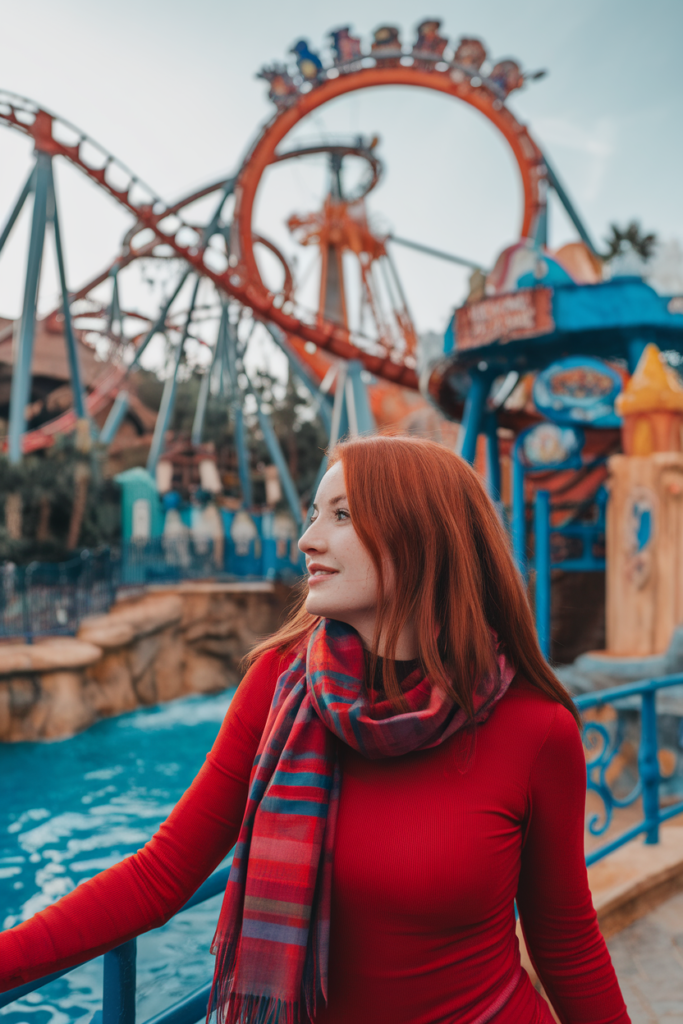
Isla Mágica is a thrilling theme park in Seville that offers fun for visitors of all ages. Located on the grounds of the former Expo ’92 site, this park is designed around the theme of Spanish exploration during the Age of Discovery.
Divided into various themed areas, including colonial America, pirate adventures, and tropical jungles, the park combines history with adventure.
Visitors can enjoy a variety of attractions, from high-speed roller coasters and water rides to immersive 4D experiences and live shows. For younger guests, the park offers child-friendly rides and interactive play areas.
During the summer months, Isla Mágica also features a water park called Agua Mágica, complete with wave pools, slides, and relaxing beach zones.
For a memorable visit, arrive early to beat the lines and explore each themed zone at your own pace. Capture the park’s vibrant settings, from tropical backdrops to colonial-style facades, making it an ideal destination for family fun and adventure seekers alike.
Las Setas Market
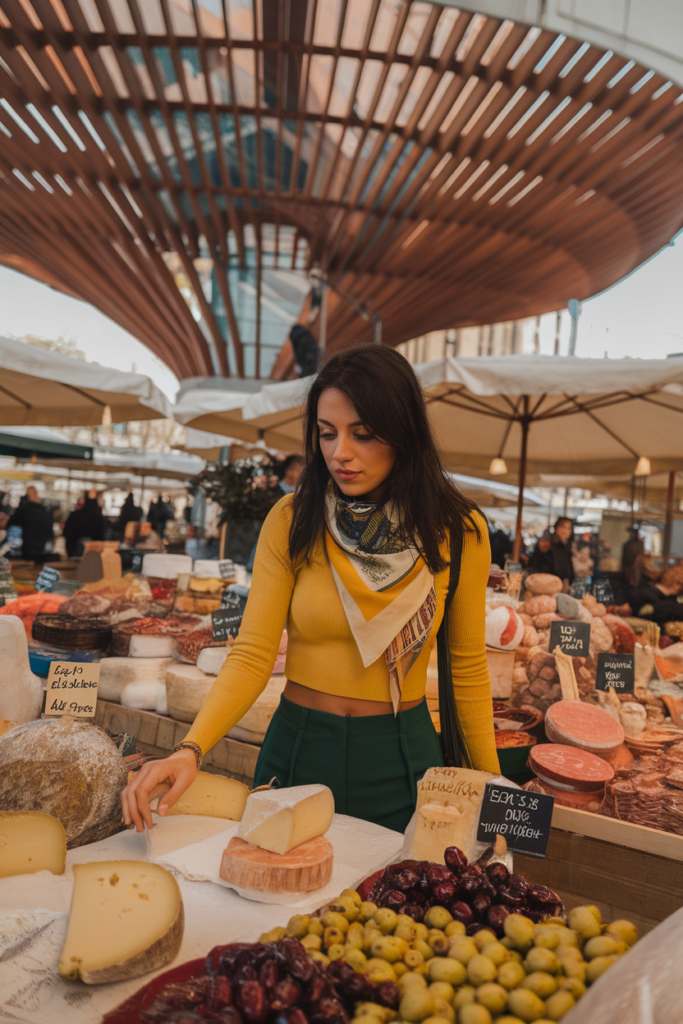
Las Setas Market, nestled beneath the iconic Metropol Parasol in Seville’s Plaza de la Encarnación, is a lively blend of modernity and tradition.
This underground market is a treasure trove of Andalusian culinary delights, featuring stalls stocked with fresh produce, seafood, meats, and artisanal goods. It’s an ideal place to explore Seville’s gastronomic culture, with vendors offering specialties like jamón ibérico, local cheeses, and olives.
The market also boasts cozy eateries where visitors can enjoy traditional tapas or sip local wines. It’s not just a place to shop but also a cultural experience, as the vibrant ambiance reflects the city’s charm. The modern design of the Metropol Parasol above contrasts beautifully with the market’s traditional offerings, creating a unique setting for photography and exploration.
Don’t miss the opportunity to interact with local vendors, who often share stories behind their products, adding a personal touch to your visit. Whether you’re looking to sample Andalusian flavors, gather fresh ingredients, or enjoy a meal, Las Setas Market offers an authentic and memorable experience.
Combine your visit with a stroll along the Metropol Parasol’s rooftop for panoramic views of Seville, creating a perfect day of culinary and visual delights.
Wrapping Up
Seville is a city that captivates with its rich history, vibrant culture, and stunning architecture. From the grandeur of the Real Alcázar to the lively atmosphere of the Triana District and the modern allure of Metropol Parasol, every corner of Seville offers something special.
Whether you’re exploring its iconic landmarks, savoring Andalusian flavors on a tapas tour, or simply wandering the picturesque streets, Seville promises unforgettable experiences. With its blend of tradition and modernity, this Andalusian gem invites you to discover its unique charm and create lasting memories.
